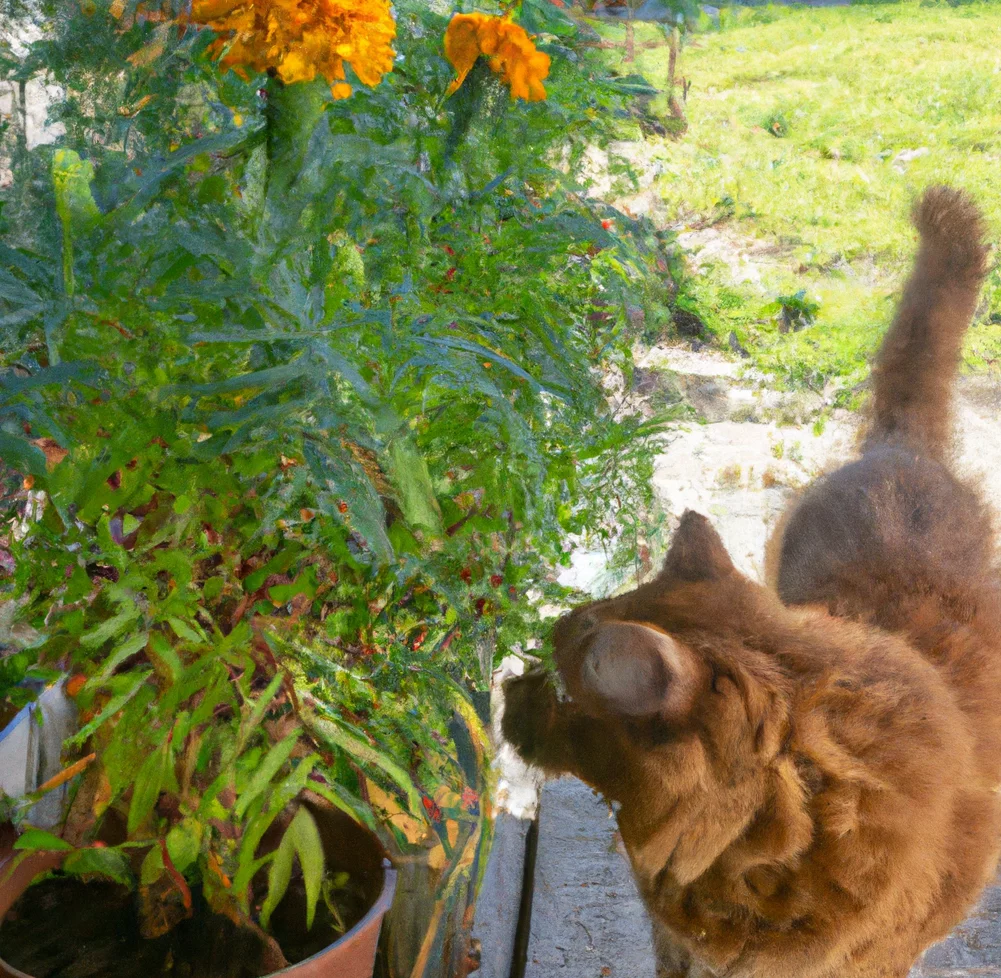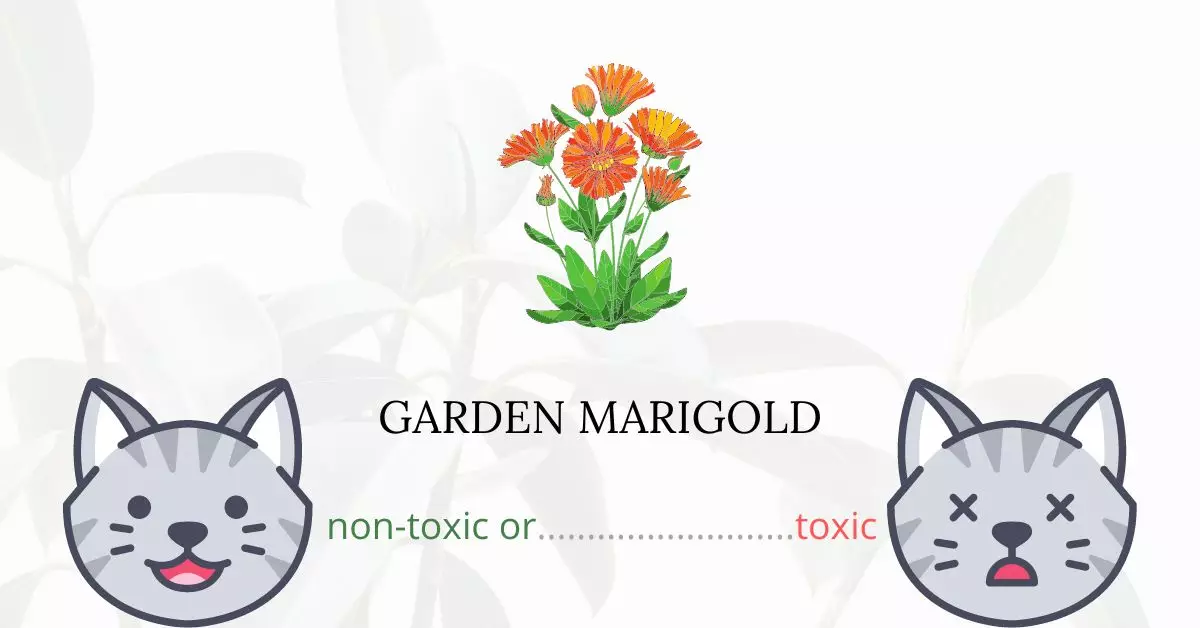Marigolds, often found in gardens, come in various types, and their effects on cats differ. Calendula Officinalis, commonly known as pot marigolds, is not harmful to cats. On the other hand, Tagetes, often referred to as French Marigolds, can cause minor gastrointestinal discomfort if ingested by cats. It’s essential to recognize these differences when considering the safety of these plants for our feline friends.
This article was crafted in collaboration with a team of experienced DVMs (doctors of veterinary medicine). With their expertise, coupled with extensive research from high-authority websites such as ASPCA and PetMD, we aim to provide accurate and up-to-date information about the potential risks garden marigolds may pose to cats.
Can Cats Eat Garden Marigold?

ASPCA lists garden marigold or pot marigold, as a plant that is not toxic to cats.
If you’ve looked into whether cats can safely eat marigolds, you’ve definitely run with contradicting information.
Marigolds are classified as safe to feed to cats by some sources while others list them as poisonous to cats. It’s possible that the type of marigold you’re reading about is what’s making you uncertain.
We must remember that herbicides may have been applied to surrounding gardens or plants, even though the marigold the cat ate is safe.
If the cat has problems digesting the plant material, a blockage could form because cats’ digestive systems aren’t designed to handle foliage and flowers.
What is Garden Marigold?

The Garden marigold (Calendula officinalis) is a member of the daisy and dandelion family and is found throughout Asia, North America, and Europe. It is most often known as the pot marigold. It has been used to treat wounds, ulcers, heat burns, and herpes zoster topically in addition to dermatitis. It blooms from the first days of spring until the first frost, and its branching stems reach heights of 30 to 60 cm.
The leaves are 5–17 cm long, oblong-lanceolate, hairy on both sides, and have whole or sporadic wavy or weakly serrated margins. The golden inflorescences include two rows of hairy bracts surrounding a thick capitulum or flowerhead that is 4–7 cm in diameter.
Keeping Cats Away From Garden Marigold

You can use plants to entice cats to another garden area instead of trying to keep them out of one area. Give the cats a bed full of plants that will attract them to try and keep them out of your flowerbed. The apparent catnip and cat mint, as well as Jacob’s ladder, lemongrass, valerian, and flax, are plants that attract cats.
Plants to Avoid For Your Cats
If you are a cat owner and unsure if the plants growing in your yard are harmful to your cats, check out this list of toxic plants for cats. You can also check our list of non-toxic plants for cats.





